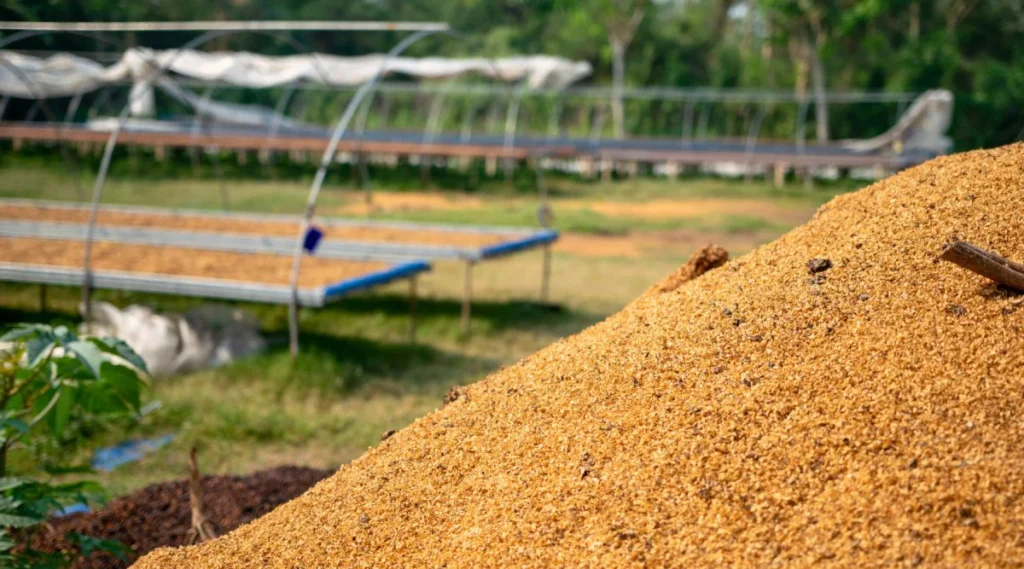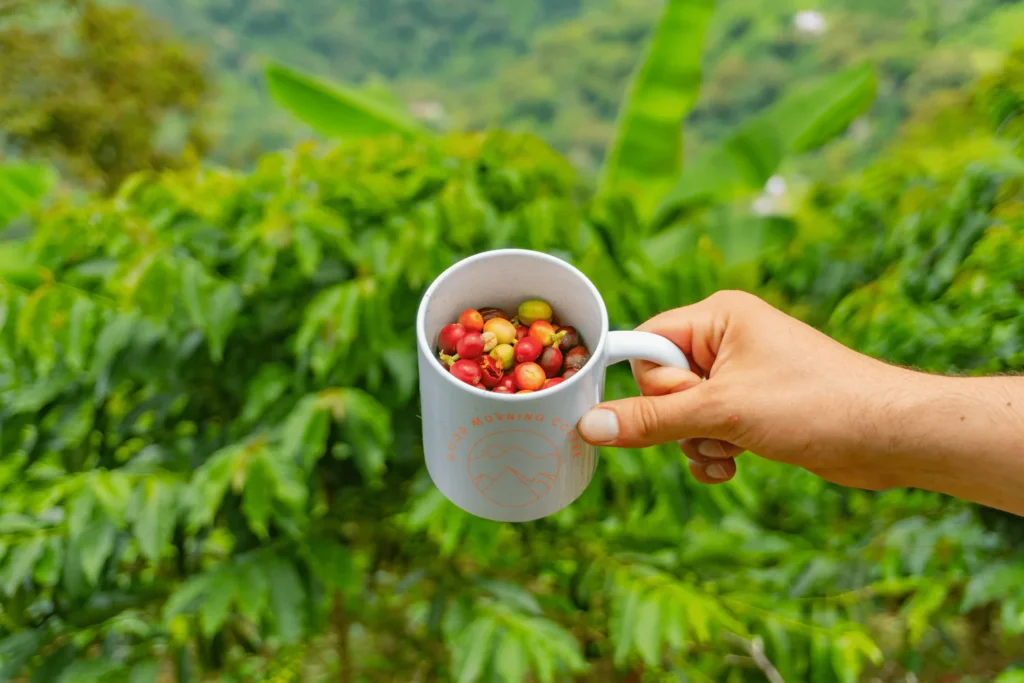Starbucks, a global leader in the coffeehouse industry, is known for its consistency in delivering high-quality coffee experiences. One key element behind their success is the use of advanced commercial espresso machines specifically engineered for high performance and durability.
This article will delve into what espresso machines does Starbucks use, highlighting their features, benefits, and the technology that makes them a preferred choice. Understanding these machines not only gives insight into how Starbucks maintains its quality but also sheds light on what to consider if you’re aiming for similar performance at a café or even at home.
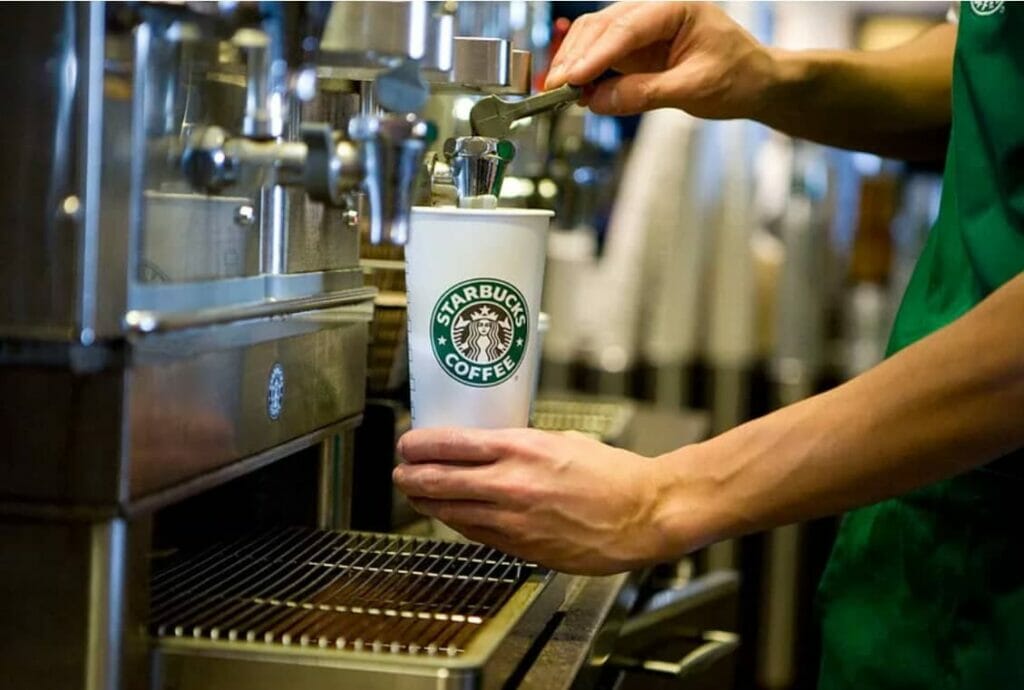
Overview of Starbucks’ Espresso Machines
Starbucks utilizes a range of espresso machines designed to handle high-volume orders, maintain consistent quality, and meet the needs of a bustling café environment. Over the years, Starbucks has used several models, but they are primarily known for employing two main brands: Verismo System by Thermoplan and Mastrena High-Performance Espresso Machines. These machines are designed to optimize speed, consistency, and durability, making them a cornerstone in Starbucks’ operations worldwide.
Verismo System by Thermoplan
The Verismo System was the initial choice for Starbucks’ espresso production. Developed by the Swiss company Thermoplan AG, this system is known for its unique ability to produce high-quality espresso and steamed milk at a remarkable speed. The Verismo’s programmable settings and user-friendly design make it ideal for handling high demand while maintaining consistent shot quality.

Key Features of the Verismo System
The Verismo System comes with a variety of features that set it apart from traditional commercial espresso machines:
- Programmable Settings: Baristas can set up different brewing profiles for various drinks, ensuring consistency in flavor.
- Durability: Designed for heavy use, this machine can withstand the daily grind of a busy Starbucks location.
- Ease of Use: With its simplified interface, even new baristas can quickly learn how to operate it, reducing training time.
Benefits of Using the Verismo System in Starbucks Stores
Starbucks relies on the Verismo System primarily for its ability to deliver high-quality espresso quickly and efficiently. The machine’s advanced technology allows for precise temperature control and a high level of automation, which helps maintain consistency across thousands of locations. Its design also minimizes the margin for human error, which is crucial in a high-paced environment.

Verismo vs. Traditional Espresso Machines
The Verismo System stands out when compared to traditional espresso machines in several ways:
- Automation: The Verismo’s automation reduces the need for manual tamping, which is essential for consistency.
- High Capacity: Traditional machines may struggle in a high-volume setting, whereas the Verismo is built to handle the heavy demand at Starbucks locations.
- Ease of Maintenance: The Verismo’s design allows for quicker maintenance and cleaning, which is critical for minimizing downtime.
Mastrena High-Performance Espresso Machines
As Starbucks grew and required even more advanced solutions, they transitioned to Mastrena espresso machines, designed by Thermoplan AG. Mastrena machines are built exclusively for Starbucks, featuring proprietary technology that is not available to the general public.
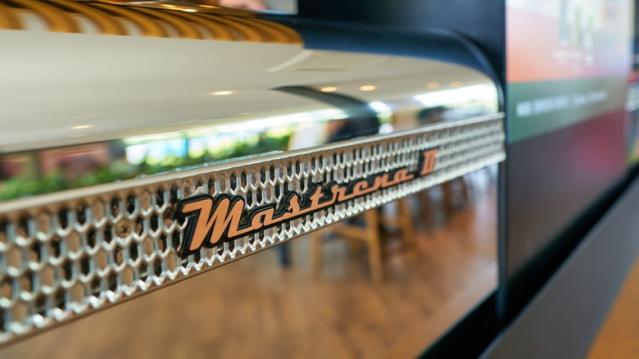
Differences Between Mastrena I and Mastrena II
The evolution from Mastrena I to Mastrena II brought several improvements:
- Enhanced Interface: The newer model features a more intuitive touch screen, allowing for easier operation and customization.
- Improved Grinder Settings: Mastrena II offers more precision in grind settings, which is crucial for maintaining the consistency of espresso shots.
- Faster Output: The updated model can produce more shots per hour, reducing wait times during peak hours.
Why Mastrena Machines Are Starbucks’ Top Choice
Mastrena machines are designed to handle the unique demands of Starbucks, providing:
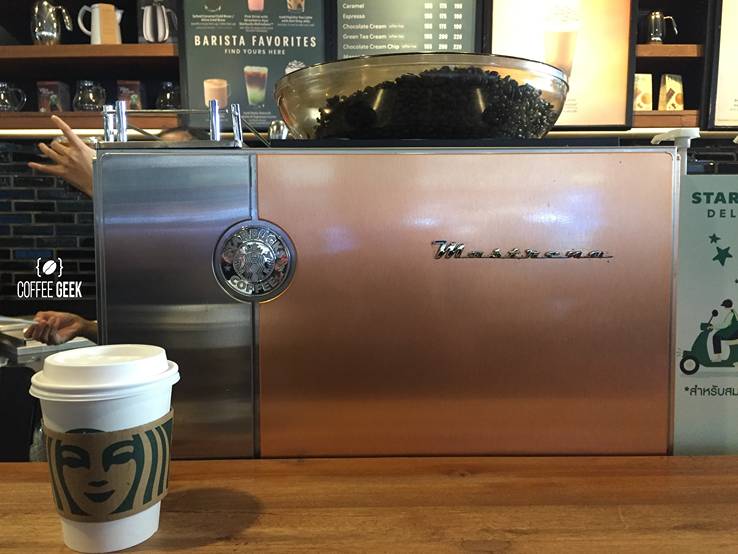
- Consistent Quality: Each shot is identical, thanks to advanced sensors and automation.
- Speed and Efficiency: The Mastrena can pull shots and steam milk simultaneously, making it possible to serve complex drinks quickly.
- Scalability: The machines are built for scale, capable of maintaining performance in stores with varying customer volumes.
Starbucks’ Shift from La Marzocco to Mastrena: A Historical Perspective
Starbucks initially used La Marzocco machines, which are known for their handcrafted quality and beautiful design. However, as Starbucks expanded rapidly, they needed a more scalable solution, leading to a shift from La Marzocco to Mastrena. This transition marked a significant change in Starbucks’ equipment strategy, focusing on machines that offered higher efficiency and lower maintenance.
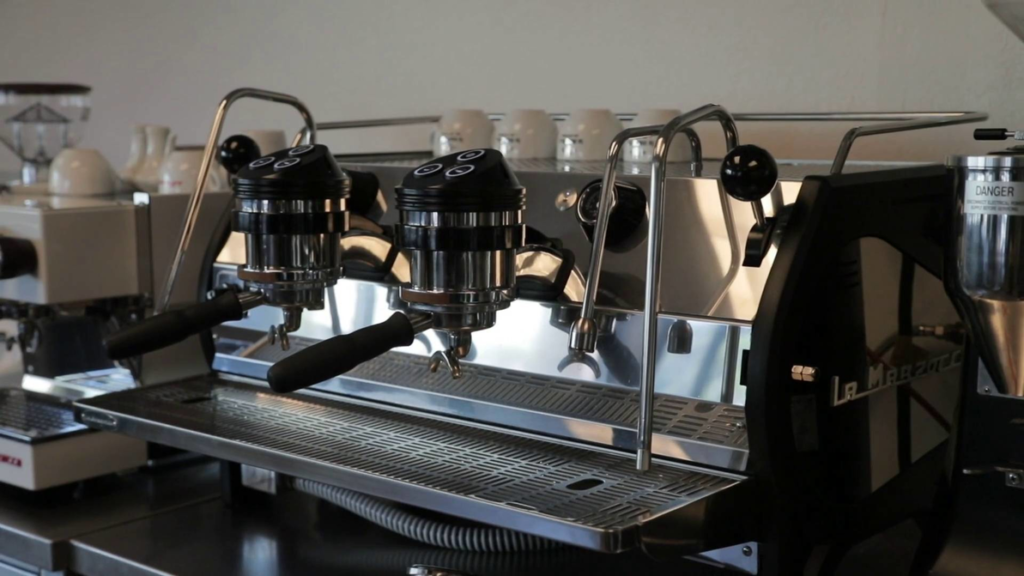
The La Marzocco Era
La Marzocco machines were a staple in Starbucks’ early days. Known for their traditional Italian craftsmanship, these machines were selected for their unparalleled shot quality and aesthetic appeal.
Why La Marzocco Machines Were Phased Out
Despite their quality, La Marzocco machines were not suited for the scale that Starbucks required. The primary reasons for their phase-out include:
- High Maintenance Costs: As handcrafted machines, they required more frequent maintenance and specialized technicians.
- Scalability Issues: They were less efficient in handling high customer volumes compared to automated systems like Mastrena.
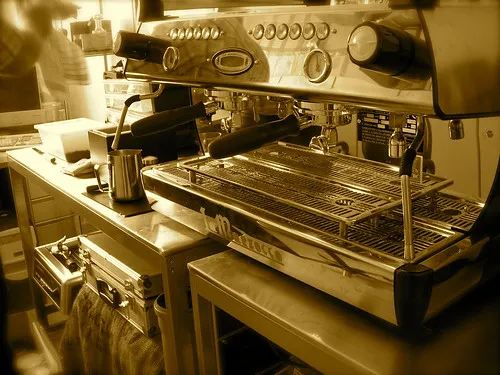
Key Features That Starbucks Prioritizes in Espresso Machines
When selecting an espresso machine, Starbucks looks for features that align with their operational needs and brand values. These include:
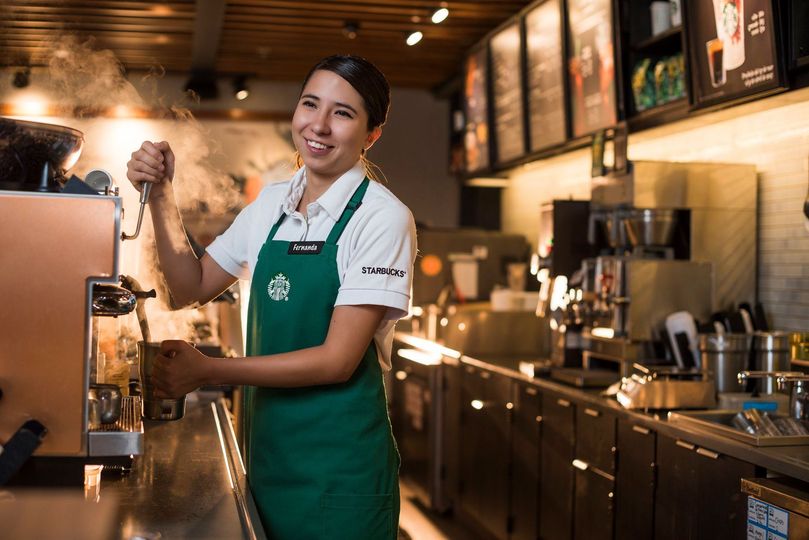
- Durability: Machines must withstand the rigors of high-volume use.
- Speed: Quick output is essential for minimizing wait times.
- Consistency: Each shot should be identical, ensuring customers get the same taste experience in every location.
- Ease of Use: The machine should be intuitive, reducing the training required for new employees.
Ease of Maintenance and Cleaning
In high-traffic locations like Starbucks, ease of maintenance is a top priority. Machines that can be cleaned quickly and easily allow for better efficiency and reduce the risk of downtime.
Consistency in Brewing and Shot Quality
Starbucks places a high emphasis on consistency. Machines like the Mastrena are equipped with sensors that monitor each stage of brewing, ensuring that every shot meets Starbucks’ standards.
Customization Capabilities for Different Beverages
Starbucks offers a wide range of drinks, from espresso shots to lattes and macchiatos. Their machines must have the flexibility to adapt to these different beverages while maintaining high quality.
Future Trends: What Could Be the Next Espresso Machine for Starbucks?
As Starbucks continues to evolve, so do their equipment needs. Future trends in espresso machine technology could shape the next generation of machines used in Starbucks stores.
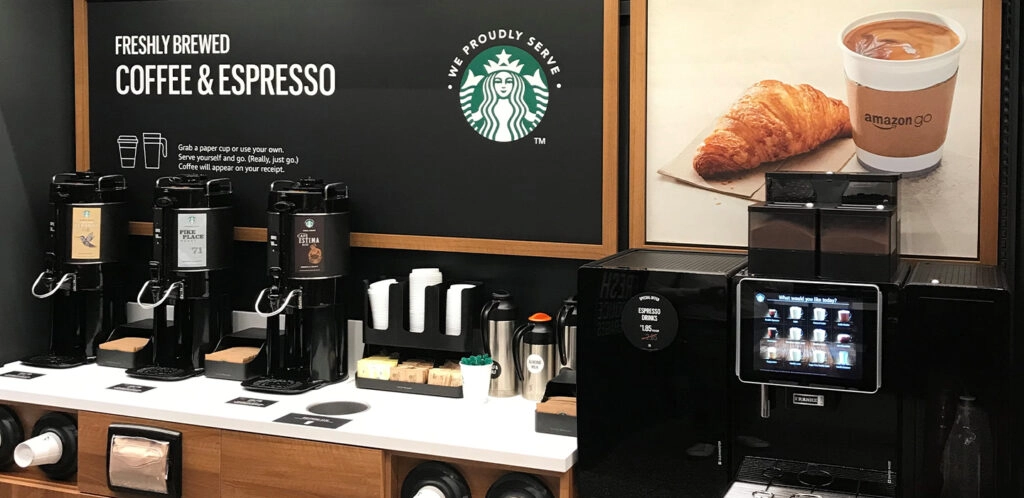
Automation and AI in Espresso Machines
The integration of AI and advanced automation could further streamline operations, allowing for real-time adjustments to grind size, temperature, and shot time based on external factors like humidity.
Sustainability and Energy Efficiency Features
Starbucks is committed to sustainability, and future machines will likely incorporate features like energy-efficient designs, reduced water usage, and materials that are easier to recycle.
How Do Starbucks Espresso Machines Compare to Home Espresso Machines?
Commercial espresso machines, like those used by Starbucks, differ significantly from home models. While they offer superior performance, they may not always be the right fit for home use.

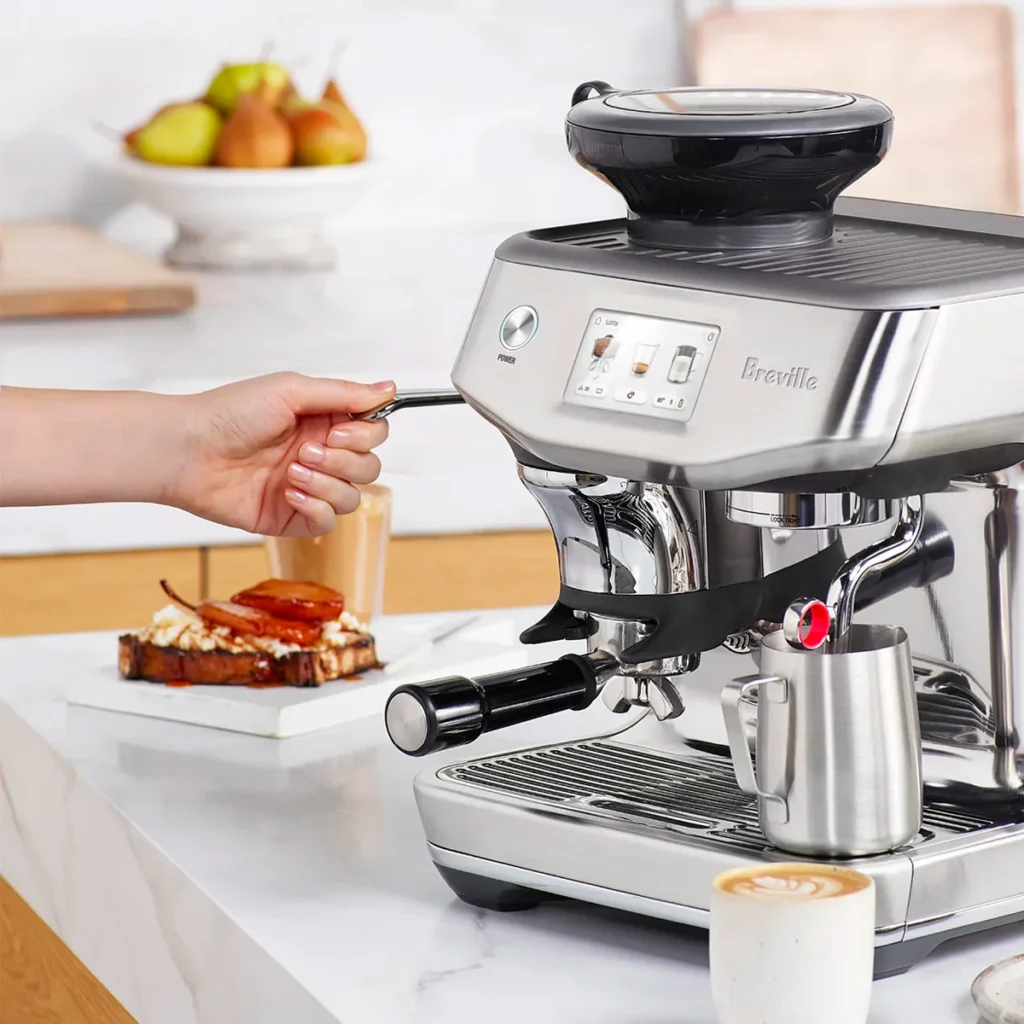
Pros and Cons of Using Commercial Espresso Machines at Home
- Pros:
- High-Quality Shots: The same technology that makes Starbucks’ espresso great would be at your fingertips.
- Durability: These machines are built to last, even with heavy use.
- Cons:
- Size and Cost: Commercial machines are often larger and more expensive.
- Complex Maintenance: Regular upkeep may require professional service.
Frequently Asked Questions
Can I Buy a Starbucks Espresso Machine?
Starbucks’ machines, like the Mastrena, are not available for direct purchase. They are custom-built and exclusively sold to Starbucks.
How Much Do Starbucks Espresso Machines Cost?
A typical Mastrena machine can cost anywhere from $15,000 to $17,000, reflecting its high-end features and advanced technology.
How Long Do Starbucks Espresso Machines Last?
With proper maintenance, a Starbucks espresso machine can last several years, even in high-volume settings.
Conclusion: Why Starbucks Chooses Commercial Espresso Machines Built for Scale
Starbucks’ choice of espresso machines, from the Verismo to the Mastrena, is rooted in their need for reliability, speed, and consistency. These machines are built to handle the demands of a global coffee chain, ensuring that each cup of espresso meets the high standards Starbucks is known for.
As the company continues to evolve, so too will its equipment, making Starbucks an industry leader in both coffee quality and operational efficiency.
Disclosure: Our blog contains affiliate links to products. We may receive a commission for purchases made through these links. However, this does not impact our reviews and comparisons. We try our best to keep things fair and balanced, in order to help you make the best choice for you.


